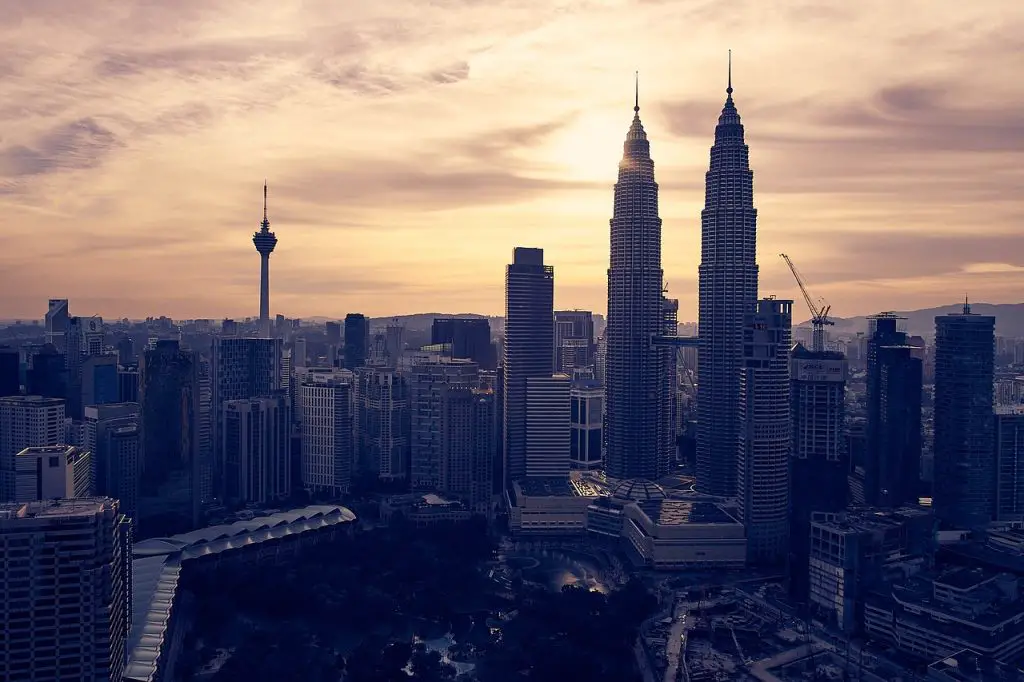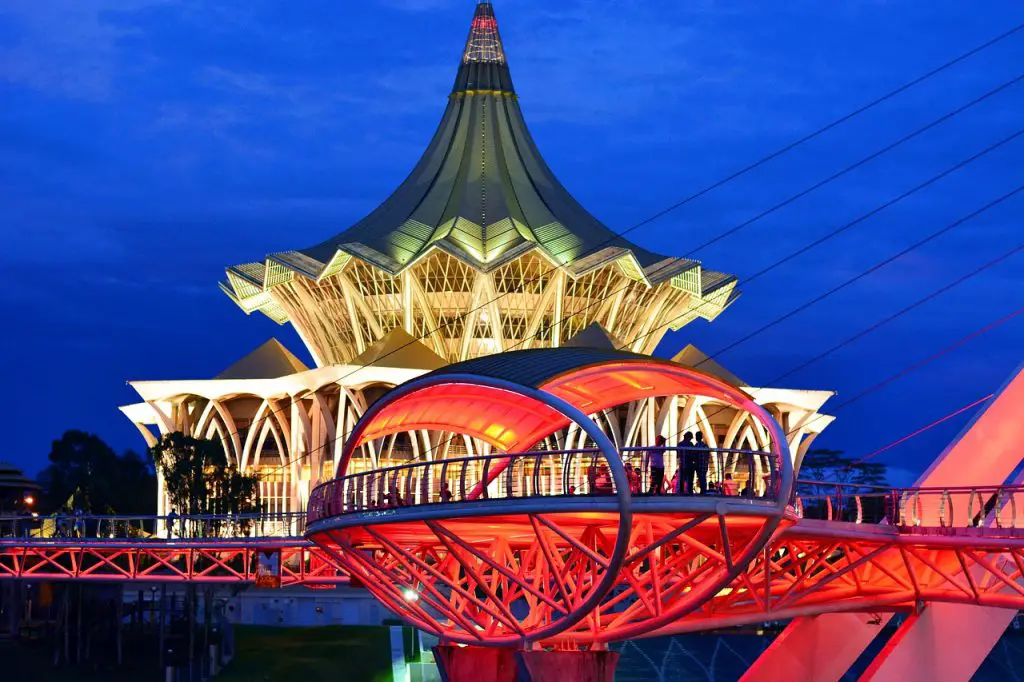When news of Japanese troops coming to attack Sarawak broke out, the Chief Secretary put out instructions requiring all Brooke officers to remain at their stations.
However, a group of Sarawak officers decided to flee the kingdom and head to Dutch Borneo. Their decision to take refuge near the border of current day Kalimantan led to what most historians called the Long Nawang Massacre.
The journey to Long Nawang from Sibu
According to local historian Ooi Keat Gin, the Brooke officers in the Lower Rejang fled in a party of 26 men, three women and two children who were aged nine months and five years old.
The party was led by Andrew Macpherson, Resident of the Third Division. He brought along his wife who was then six-months pregnant. Other Brooke officers in the group included Sibu, Kanowit and Kapit district officers.
Ooi wrote, “Macpherson’s plan was to go up the Rajang, cross over into Dutch Borneo to Long Nawang, a Dutch military outpost.
“The party reached Kapit by motorboat, negotiated the Pelagus Rapids to arrive at Long Bahau above Belaga. They stayed at Kenyah longhouses along the way. After Belaga, smaller and lighter boats brought them through the shallower, rapid-infested headwaters of the Ulu Rejang.”
After 28 gruelling days of crossing treacherous mountains on Jan 22, 1942, the group finally arrived at Long Nawang, which was also a Kenyah settlement.
There, the party had the comfort of a four-bed hospital with an adequate supply of medicine. Furthermore, they had enough food supply to last for a year.
Macpherson and his team separate at Long Nawang
After arriving at Long Nawang, Macpherson who was suffering from malaria, decided to stay there. However, he allowed the rest to proceed and carry on their plans.
So four men – Jacks, Schotling, McKerracher and T.E Walter – decided to go to Long Iram and then Samarinda.
The men reached Samarinda and managed to board a plane to Bandung. Somehow Jacks and McKerracher eventually reached Perth while Walter and Schotling were captured and imprisoned by the Japanese.
Meanwhile another group of Brooke officers unfit to travel decided to return to Belaga. There, they were eventually taken into custody and interred at Batu Lintang POWs Camp. They may have had a better fate than those who stayed behind at Long Nawang.
The other refugees of Long Nawang
Besides Macpherson and his team, there was another group of Brooke officers and a missionary priest from Marudi who made their way to Long Nawang.
According to retired Mill Hill Missionary priest Theo M. Feldbrugge, he had a paternal uncle who was a Mill Hill priest during World War II.
The older Rev Feldbrugge was the parish priest of Marudi. Together with Resident of Marudi Mr Hudden and a few other British officers, they decided to go to Kalimantan to seek refuge.
“So they walked up to Baram and by boat and then they walked all the way to Long Sang, Long Nakang and across the mountains down the riverside till finally they ended up in Long Nawang.”
The arrival of Dutch and Indonesian soldiers
In April 1942, Lieutenant D.J.A Westerhuis arrived at Long Nawang along with 40 Dutch and Indonesian soldiers.
Four months later, two Kenyahs brought the news that more than 70 Japanese soldiers were on their way to Long Nawang.
But Westerhuis did not believe that the Japanese would ever discover their hideout.
Rev Feldbrugge pointed out that Long Nawang was at the very head of the Mahakam river in Indonesia which went to Balikpapan.
“And they thought the Japs would never come. But the Japs were in Balikpapan and they were told God knows by whom that Orang Putih were there in Long Nawang.”
So the Japanese came up to Long Nawang, trickling in via Mahakam river.
The massacre
On August 20, 1942, about 76 Japanese marines led by Captain Mora Shima arrived at Long Nawang attacking the border post with mortars, light machine guns and rifles.
Many were killed during the attack. The Japanese rounded up the surviving Europeans, imprisoning them while they allowed the Indonesian soldiers to return to their military post at Tarakan.
There were at least two eyewitnesses for what happened next; Corporal Tamburiang and Private Markus who were former native polices living in Long Nawang were executed on Aug 26 and buried in two graves.
Then a month later on Sept 23, the Japanese massacred all the women and children.
Another witness, Tusau Padan who was 11 years old at that time saw how the execution of the children took place.
The young children were forced to climb palm trees. Then they were impaled on the upraised bayonets when they slipped down in exhaustion.
All the women and children were buried in one grave.
After the war, the victims of Long Nawang massacre were exhumed and reburied on Tarakan island at Makam Pahlawan.
Among them were the grandchildren of Desmond Vernon Murphy, a British officer serving as Assistant Superintendent of the Sarawak constabulary and Sarawak Rangers.
Murphy was one of the officers who joined Macpherson to Long Nawang and later executed. His grandchildren wanted him to be buried in the Heroes Graves in Kuching so that it would be easier for them to visit to pay their respects.

Credit: Public Domain (Copyright expired).
Why did the Japanese massacre the refugees of Long Nawang?
It took the Japanese alone four weeks to reach Long Nawang. Having to travel out of the area with the more than 40 prisoners including women and children along would have taken them even longer.
For the Japanese troops at that moment, it was more expedient to kill the prisoners right there in that thick jungle.
Another reason why they were killed was because, for the Japanese, the refugees were considered enemy fugitives (even Macpherson’s newborn baby).
Ooi wrote in his book The Japanese Occupation of Borneo, “The fact that the refugees at Long Nawang did not voluntarily surrender themselves as was the expectation of the Japanese military authorities following the establishment of a new regime in Borneo made them, legally speaking, enemy fugitives.”
He added that from this perspective their execution was in line with wartime military requirements.
As for Captain Shima, the man who was responsible for the Long Nawang Massacre? There were no traces of him after WWII, and so he was never persecuted for his war crimes.



























